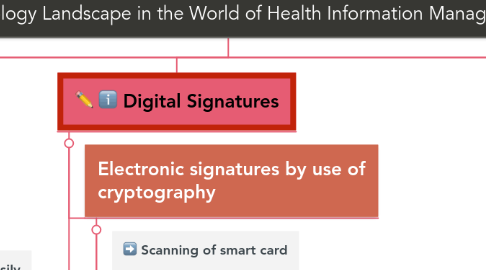
1. National Practitioner Data Bank
1.1. A nationwide data bank where physician's credentials such as boards and licensing can be found as well as any past malpractice information.
1.1.1. Hospital Administration and Governing board
1.1.2. Determine and discipline a practitioner for unethical or poor behavior.
1.2. Monitor practitioners past and current status
2. Electronic Health Records
2.1. Patient history and files available on a computer database all in one place
2.1.1. Safer than paper files, more organized and easily accessible
2.1.1.1. Employee access and patient access
2.2. Past procedures, medical history, labs, and prescriptions.
2.2.1. Health information exchange between physicians
2.2.2. Telemedicine and Mobile phone apps so patients can access their own history and appointments
2.2.2.1. Nursing staff can identify proper dosage and verify that they are using the correct treatment.
2.3. Insurance and Coding uses
2.3.1. Insurance: Reimbursement and billing purposes
2.3.2. Coders enter information to be accessed by insurance and researchers. Researchers can access this information for statistical purposes.
2.3.2.1. Case Managers can access patient records and manage patient care across multiple practices and monitor treatment and diagnosis.
3. Digital Signatures
3.1. Electronic signatures by use of cryptography
3.1.1. Scanning of smart card
3.1.2. Ensures security
3.1.2.1. Information travels from physician to physician, as well as pharmacists and other providers involved in patient care and treatment
3.2. Past issues of overprescribing and forgery eliminated
3.2.1. No longer allows for paper signatures which could be copied and forged
4. Smart Cards
4.1. Credit card resembling, safety insuring card that requires the use of a pin to proper identify the medical professional using it
4.1.1. Emits forgery
4.1.2. Ensures patient information safety
4.1.2.1. Remembers past information about patient and practitioner
4.1.2.2. Information goes straight to the pharmacy or hospital wirelessly
4.1.2.2.1. Stores and identifies practitioner's digital signature
5. Organization of Information Management and how Patient Information Travels by use of Technology- From treatment and care to cost and insurance analysis
5.1. Administration and Governing Board
5.2. Provider Level
5.2.1. Clinical team level nurses, medical assistants, technicians, etc.
5.2.1.1. Coders, Billing, Reception staff of hospital of private practice
5.2.1.1.1. Insurance Companies, Claims Processors, Case Managers, etc.
